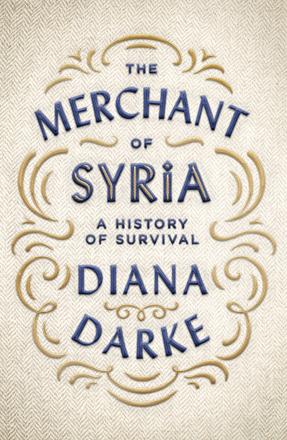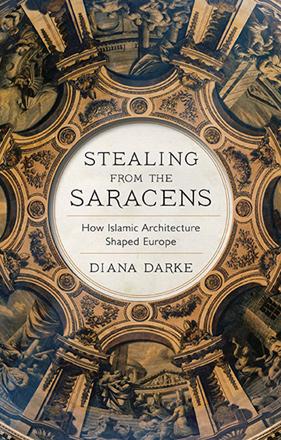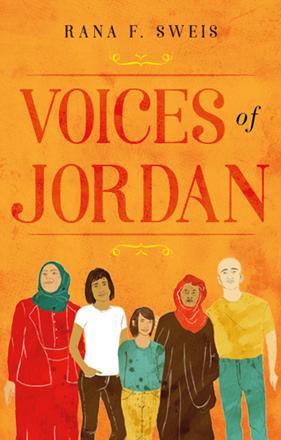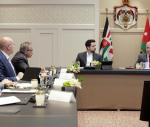You are here
‘A worthy descendant of Syria’s Silk Road’
By Sally Bland - Sep 30,2018 - Last updated at Sep 30,2018

The Merchant of Syria: A History of Survival
Diana Darke
London: Hurst & Company, 2018
Pp. 340
The term merchant is sometimes used disparagingly, but to British Arabist Diana Darke, commerce is the glue that has held together the Fertile Crescent’s diverse societies over the centuries, added to the unifying factor of Islam. Accordingly, merchants, if ethical, can bring prosperity and cohesion not only to their family, but to their community and country.
So, when the four sons of Mohammad Chaker Chamsi-Pasha, known to all as Abu Chaker, asked her to write the story of his life after his 2013 death, she agreed, based on her friendship with the family but also her knowledge of and concern for Syria.
Darke makes the biography of Abu Chaker more meaningful by putting his life in its political, social and economic context. The book is structured so that alternating chapters tell about his life, while the ones in between trace Syria’s trajectory during the same years. The fact that Abu Chaker was a cloth merchant makes him representative of Syria’s traditional economy as textiles have always accounted for over half of its production.
The fact that he was born in Homs and began his textile trade there makes the book especially interesting since less has been written about Homs than about Damascus and Aleppo. Yet the atmosphere of the Homs souq, so charmingly evoked by Darke’s poignant prose, will remind anyone who has visited Syria of these other cities and their markets.
The book may evoke nostalgia since many of the places it describes have been damaged or destroyed, but Darke’s aim is forward-looking. Tracing Abu Chaker’s trajectory is meant to inspire Syrians as they begin struggling to rebuild their lives and their country. Abu Chaker himself had to rebuild his business almost from scratch several different times.
At the age of ten, he left school to take over the family shop in Homs after his father’s death and made it a success. In 1959, he relocated to Beirut to avoid anticipated Baathist nationalisations; from there he expanded his business to Saudi Arabia and Afghanistan, only to depart for London to escape the Lebanese civil war in 1975. In the UK, he was able to buy the failing Hield mill from which he had been importing high-quality broadcloth for years and make it profitable again.
By expanding on the biography project, Darke has actually written a kind of social history of modern Syria, prefaced by chapters on the mercantile tradition from the advent of Islam and the Ottoman legacy, and continuing up to today.
This allows her to explore some of her main ideas, such as that inclusion promotes prosperity. “Over the last fourteen centuries since Islam became the dominant religion in the region… periods of tolerant rule led to increased trade and prosperity, while the periods marked by exclusion and discrimination resulted instead in wars, uprisings and disputes that thwarted commerce, bringing deprivation and hardship to the population”. (p. 12)
Contrary to the French efforts to divide and rule during the Mandate period, “commerce would in fact bond people from different parts of the countryside with each other and with the cities”. (p. 132)
Abu Chaker exemplified these ideas. Himself a devout Sunni Muslim, he cultivated friendships and business dealings with persons of all faiths. He also maintained links with the countryside which allowed him to diversify his business. For the biographical chapters, Darke’s sources were his sons, his wife and close friends, one of whom called him “a worthy descendant of Syria’s Silk Road trading empire from across the centuries”. (p. 261)
For Syria’s history, she draws on many sources, including her own experience from living there.
Both the historical chapters and those on Abu Chaker’s life are fascinating as Darke traces the socioeconomic and class changes in Syria from the French Mandate, to independence, the rise to power of the Baath Party and up to the current war.
Particularly interesting is the chapter on the war economy which gives insight into how everyday life goes on in wartime, as well as who profits. Darke’s compassion and concern for the welfare of Syria and its people is tangible, but on a few points, she is less than objective.
While repeatedly noting the regime’s foreign backers (Russia, Iran and Hizbollah), she fails to mention the generous financial and weaponry support given by outside powers to Daesh, Jebha Al Nusra and other armed groups. She also fails to mention the long-standing plans of the US and other Western powers to topple the Asad regime, as a factor in the war.
Moreover, she levels charges of sectarianism at the regime but less so at the opposition, although it is known that big parts, if not all, of the armed opposition are driven by sectarian ideology.
Nonetheless, this is definitely a book worth reading. The volume is beautifully rendered and decorated with a spectacular archaeological map of Syria on the inside covers.
Related Articles
The Weight of ParadiseIman HumaydanTranslated by Michelle HartmanMassachusetts: Interlink Books, 2016Pp.
Stealing from the Saracens: How Islamic Architecture Shaped EuropeDiana DarkeLondon: Hurst and Co., 2020Pp.
Voices of JordanRana F. SweisLondon: Hurst and Co., 2018Pp.

















